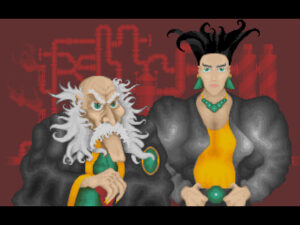Spring Thing 2022: A D R I F T
I said before that the Back Garden is for experimental stuff, but it’s also explicitly for works in progress — basically, if the author feels that it shouldn’t be competing in the Main Festival, for whatever reason, it goes here. ADRIFT is in the latter category. The ending brings the initial crisis to a more-or-less satisfying resolution, but it’s very short, and the author has indicated a desire to expand it in a post-festival release.
That initial crisis: You’re a Soviet cosmonaut and you’ve come untethered from your spacecraft. Getting back to safety involves some light parser-based puzzle-solving with an apparent time limit imposed by your oxygen level. A little experimentation shows that the time limit is fake, that a warning about 15 minutes remaining is the last event, but it uses the warnings to create a little tension in a sequence where you have to excruciatingly wait for an object to drift within reach. (After which, in accordance with the same design philosophy, it never drifts out of reach.) This is the work of a first-time author, and I find it pleasing that the utility of this kind of fakery is already within their grasp.
The story is accompanied by pictures, and the pictures are stylistically 1980s-era in a way that I strangely haven’t seen imitated elsewhere. It’s not the artful, well-chosen pixel art popular in indie game nostalgia. It’s photographs color-reduced to the point of stylization so they can be forced into a palette they’re not suited for. I can only hope that people recognize what it’s going for: the look of pictures downloaded from pre-web BBSes.
My one suggestion to the author is to add more synonyms and alternate commands. Get some first-time players to send you transcripts of their sessions to see what people are trying that should work but doesn’t.
 Comments(0)
Comments(0)